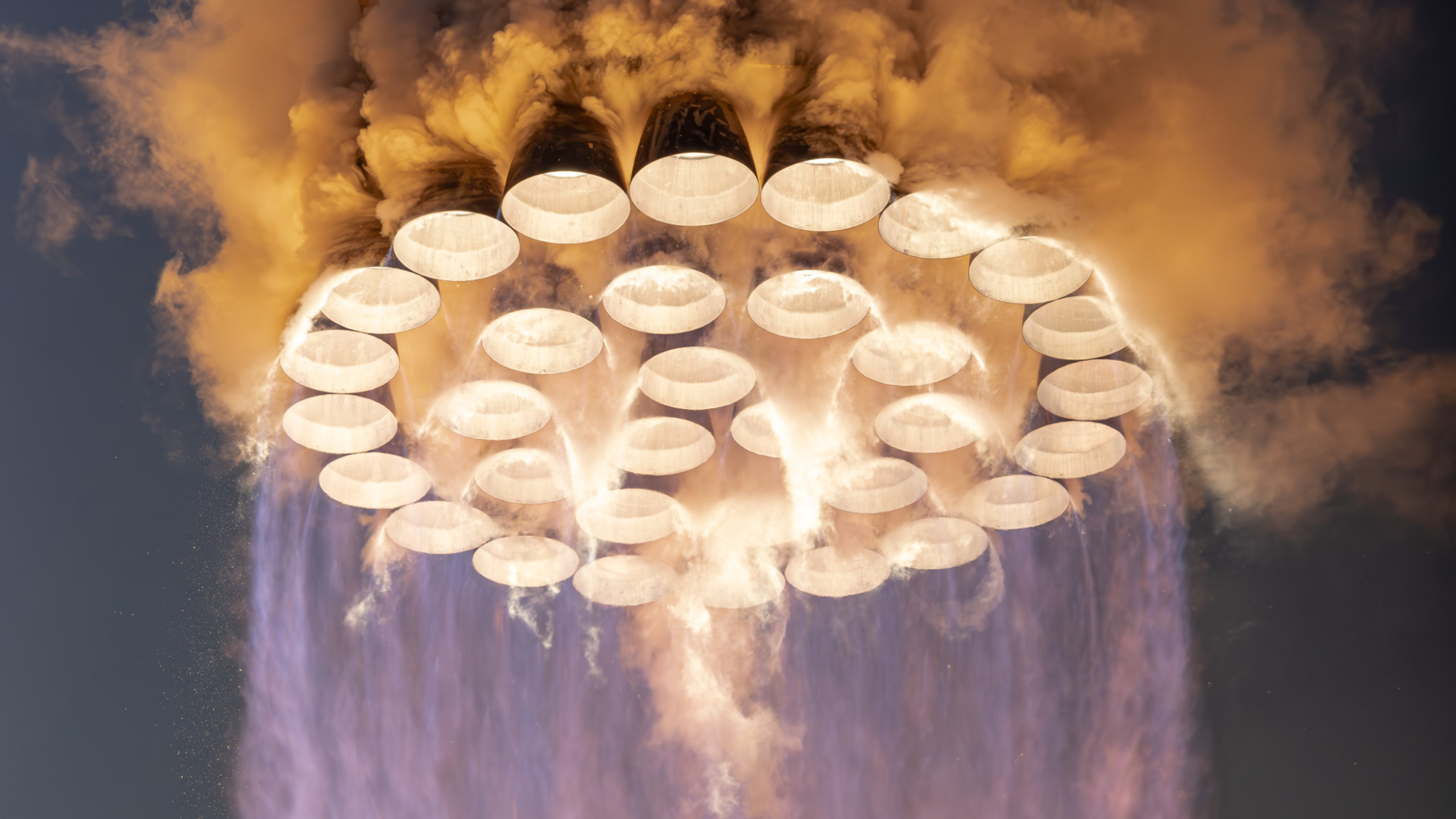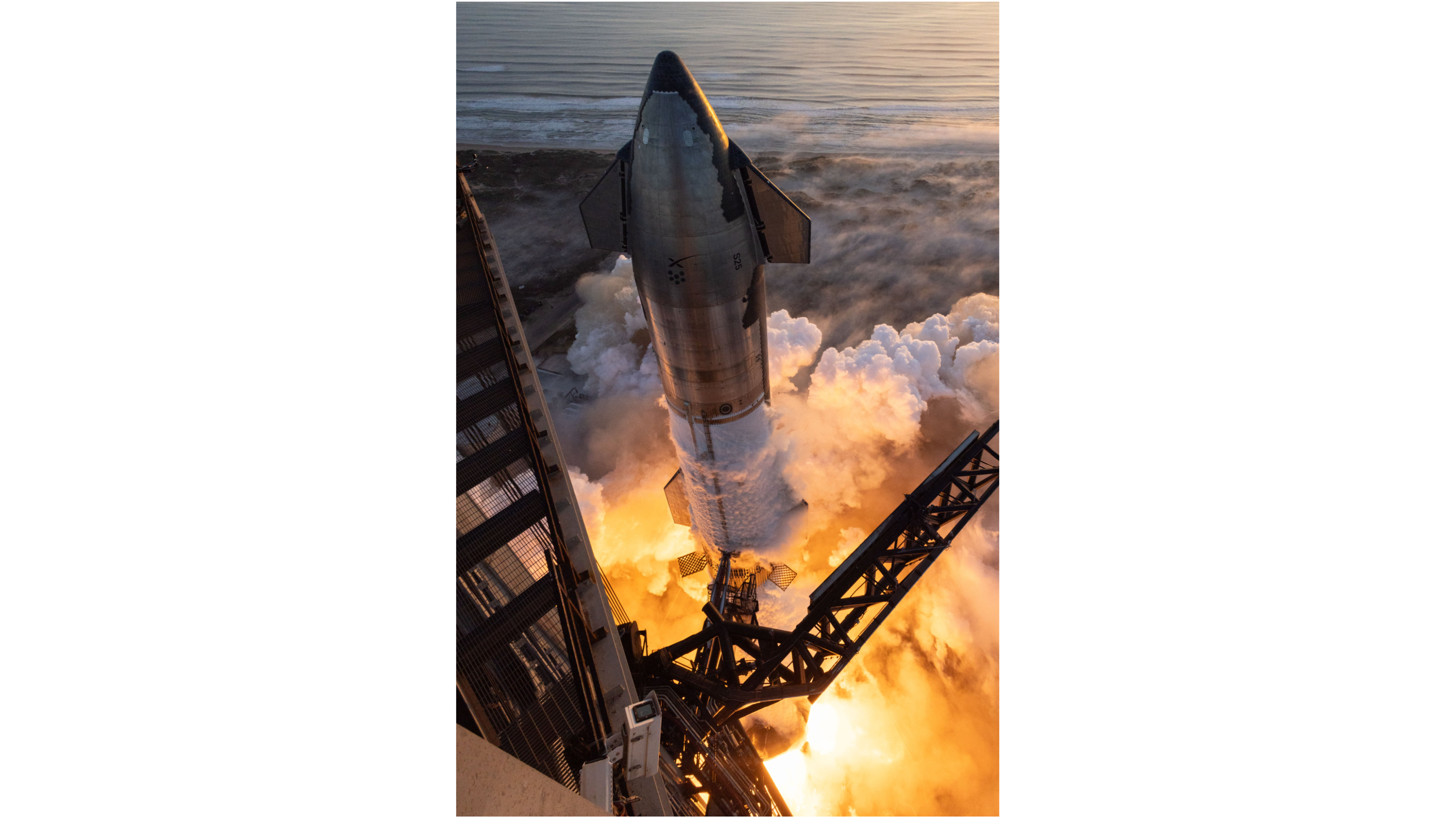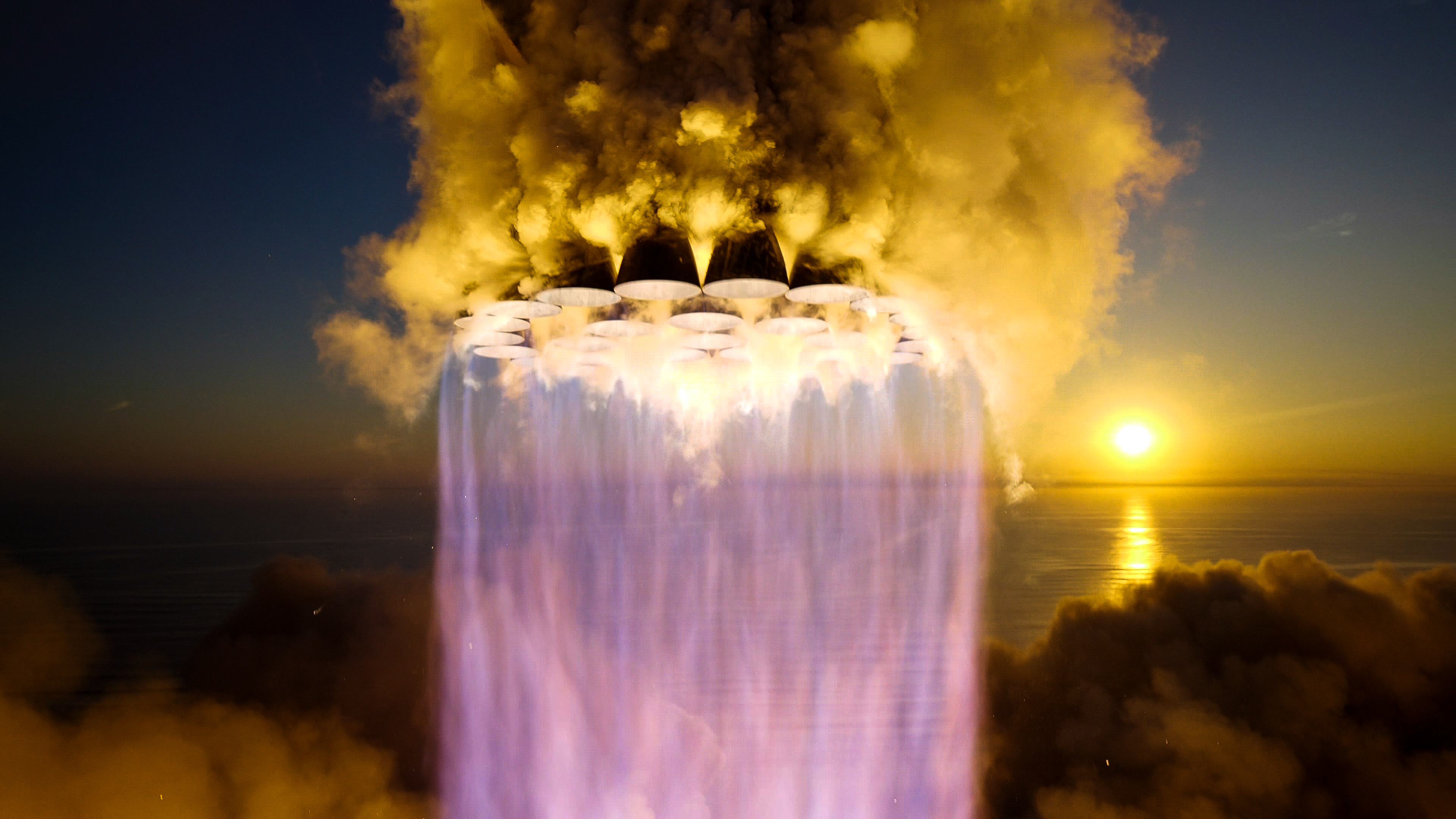See SpaceX's Starship ignite all 33 1st-stage engines in fiery test-flight photos

SpaceX shared incredible photos from the second test flight of its Starship megarocket over the weekend.
Starship — the biggest and most powerful rocket ever built — lifted off early Saturday morning (Nov. 18) from SpaceX’s Starbase facility near Boca Chica Beach in South Texas. The rocket's Super Heavy first stage is powered by 33 Raptor engines, which the photos capture igniting for liftoff.
This second test flight marked a major milestone for SpaceX, with the two-stage rocket making it farther into flight than it did during its first test back in April. While the Super Heavy booster and the Starship upper stage successfully separated after liftoff, the booster exploded shortly thereafter, and the upper stage detonated about eight minutes into flight.
Related: SpaceX's 2nd Starship launch test looks amazing in these stunning photos and videos
The amazing test-flight photos include an aerial view, which looks down on Starship's nose with billowing clouds of smoke and glowing golden flames engulfing the base of the rocket as it pushes away from its launch pad.
"The world’s most powerful launch vehicle ever developed, powered by 33 Raptor engines, lifting off from Starbase," SpaceX said in a post on X (formerly known as Twitter) on Sunday (Nov. 19).
Starship lifted off Saturday at 8 a.m. EDT (1300 GMT; 7 a.m. local Texas time), with Super Heavy successfully igniting all 33 of its Raptors. This alone was a big milestone, given that a handful of the engines conked out early during the April debut.
Breaking space news, the latest updates on rocket launches, skywatching events and more!
The SpaceX photos capture an incredibly detailed view of all of Starship’s engines, clustered together at the base of the rocket. The engines ignited in unison with a trailing blaze of flames that propelled the vehicle to space.
About two and a half minutes after liftoff, the two stages separated, with the Starship upper stage firing its own six engines. The vehicle then climbed to an altitude of about 91 miles (148 kilometers) above Earth — well beyond the 62-mile-high (100 km) boundary of space — before its signal was lost.
SpaceX is looking into what caused both Starship and Super Heavy to explode on Saturday, in an investigation overseen by the U.S. Federal Aviation Administration. The results of that investigation will inform preparations for the next Starship test flight, which SpaceX is eager to conduct.

Samantha Mathewson joined Space.com as an intern in the summer of 2016. She received a B.A. in Journalism and Environmental Science at the University of New Haven, in Connecticut. Previously, her work has been published in Nature World News. When not writing or reading about science, Samantha enjoys traveling to new places and taking photos! You can follow her on Twitter @Sam_Ashley13.


